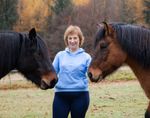Where Do Our Emotions Come from?

As human beings we all have a myriad of emotions and emotional experiences. Many of us constantly strive to become more emotionally intelligent in order to enhance our lives, relationships, mental health and self-understanding.
What are emotions?
Where do they come from?
How can we learn to regulate our emotions in a healthy manner?
Emotions are closely related to feelings and moods which can be defined thus:
Emotions can be defined as autonomic, largely unconscious behavioural or cognitive responses to a significant event or object.
Feelings are our conscious, often physical, experiences of that emotion.
Moods are longer lasting and untethered to circumstances - (Dr. Sarah McKay, The Neuroscience Academy).
The classical view of emotions first put forward by Charles Darwin was that they were discreet and universal and strongly associated with particular, and familiar, facial expressions. Paul Eckman looked at emotion in the human face and believed, as Darwin did, that there were universal basic emotions which were genetically hard wired and which showed in facial expressions. There are now many critics of this idea stating that it is over simple and also has a strong cultural bias.
Over the years there have been many differing theories such as the James- Lang theory which stated that emotions are a result of our, so called, "interoception" - the sense we have of our internal state such as heart rate or temperature. An example of this would be: "I'm scared of the dog because of my racing heart."
Schachter and Singer's theory of emotions stated that they are a result of our physiological arousal and our cognitive interpretation of that arousal. For example: "I label my racing heart as fear because I appraise the dog as dangerous."
Science is constantly developing and more recent research has discredited the above theories. The most recent theory is that emotions are not hardwired but are complex mental constructs, like thoughts, shaped by our cognitive and social experiences. They emerge from our interpretation of our interoceptive input and our past experiences. Emotions can be flexible, vary between individuals and between cultures. For example what one person labels as joy may be different to the label another individual gives the same set of physical signs and symptoms.
Neuroscientist Lisa Feldman Barrett's theory of constructed emotions gives us more insight into the workings of the human mind and also, encouragingly, more awareness that we need not blindly be at the mercy of our emotions but that we can learn to effectively regulate them as we grow in understanding. The theory states that we construct emotions by integrating body feelings, context and cognitive appraisal and we can regulate our emotions by altering the mix.
"...we need not blindly be at the mercy of our emotions but that we can learn to effectively regulate them as we grow in understanding."
Based on the mix of inputs it receives our brains, which are fundamentally prediction machines, gives us a best guess of how we should feel, and act, at that time and in that set of circumstances.
With growing understanding we can begin to embrace the subtleties of our individual responses for example "worry" can be seen as "troubled, jittery, apprehensive, concerned" and "calm" could be "at ease, chilled, mellow, content". All of these examples show that our emotions can be on a spectrum and can be totally individual and personal.
If you would like to begin to understand your own emotions in a more subtle way then I can recommend the app "How We Feel" which is free and fun to use.
If we apply the constructed emotions theory to our ability to regulate emotions we can look at it from three different perspectives:
- We can alter our physiology by using breathing techniques known to calm the sympathetic (fight and flight) nervous system in favour of the parasympathetic (rest and digest).
- We can actively go for a walk in the fresh air or perhaps engage in cold water swimming. Both of these activities are known to help us to feel good.
- We can schedule rewarding activities which help to increase positive emotions and thoughtfully remind ourselves of pleasure.
With an increased awareness of how we feel, react and behave then we can grow in the confidence that we are able to alter our responses and therefore become less afraid of the, so-called, negative emotions. Instead we can come to see them as simply part of who we are, leading to improvement in mental health and overall well-being.



